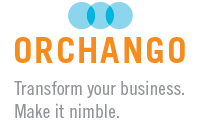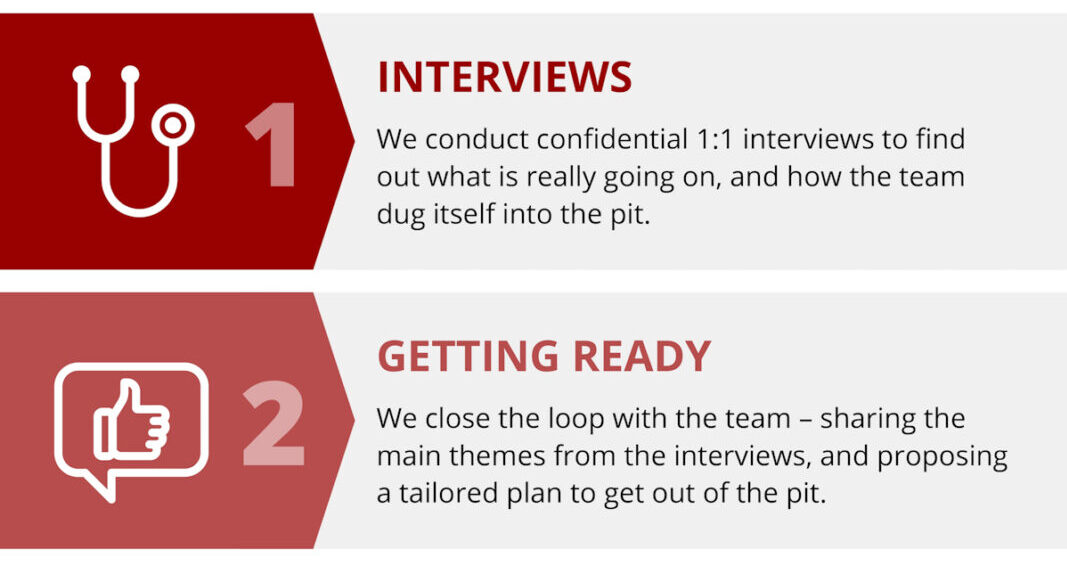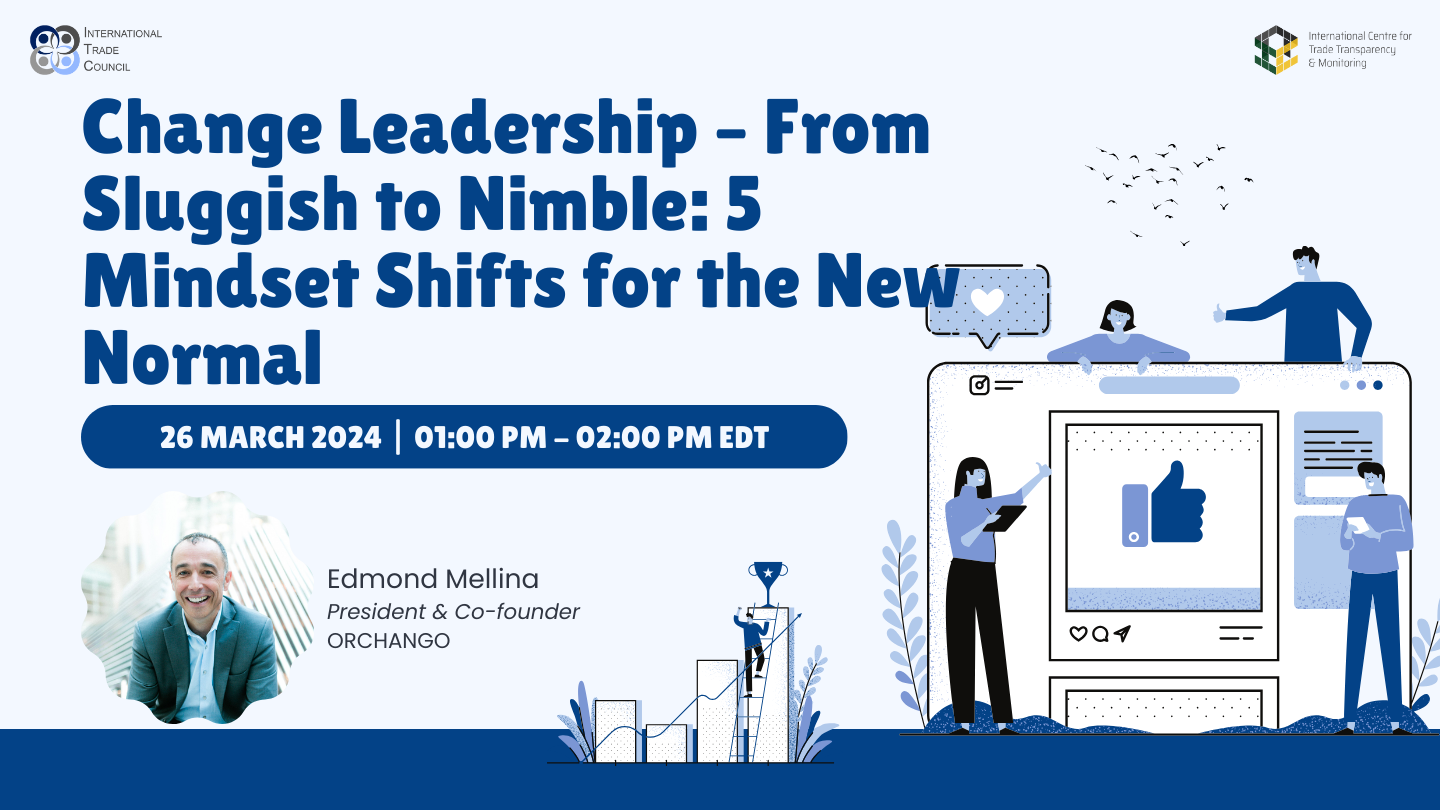How do you transform the dynamics of a team (leadership or otherwise) from dysfunctional to…
Build the emotional case for change (not just the business case)

Emotions are hugely powerful. But most managers barely tap into that power when driving organizational change. That is the reason we stress to participants in our change leadership learning programs the importance of building the emotional case for change – not just the business case.
How much more powerful?
To help these participants understand why, we refer to the Corporate Leadership Council’s classic research comparing emotional engagement and rational commitment. CLC assessed the amount of discretionary effort that employees are prepared to bring to an activity under each scenario (instead of “discretionary effort”, we prefer to use the simpler notion of “energy”) . We tell the leaders in our program that CLC found significantly higher energy levels when people were emotionally engaged.
engagement and rational commitment. CLC assessed the amount of discretionary effort that employees are prepared to bring to an activity under each scenario (instead of “discretionary effort”, we prefer to use the simpler notion of “energy”) . We tell the leaders in our program that CLC found significantly higher energy levels when people were emotionally engaged.
At that point, most participants nod: they intuitively know that being moved (emotional response) is more powerful than being convinced (rational response). So we ask them to guess how much more energy CLC’s researchers found with emotional engagement. Most of their responses fall in the 50% to 70% range. More bullish participants might push the envelop by shouting: “100% more energy!”.
We tell them: “Well, you all are way off the mark”… We let them think about it for a few seconds while walking to a flipchart. We then write “4X” in big, red letters (red being the colour of the heart – which is a source of emotions).
Change leaders must tap into this great source of energy!
Indeed, CLC researchers found that emotional engagement generated 4X more energy than rational commitment. That’s a 300 percent increase! Participants are shocked by the difference. It gets them to stop and reflect, which is exactly what we want.
Joseph Roux (French writer, 1834-1905) captured well the power of emotions when he wrote:
Nothing vivifies, and nothing kills, like the emotions.
Of course, emotions can work for or against a change campaign. To help propel their organization forward, change leaders must find ways to minimize negative emotions. They also need to tap into the “4X factor” by working hard at eliciting positive emotional responses towards the need for change.
Most managers focus on building the business case
Driving organizational change is never easy. Change leaders need all the help they can muster. Yet, the vast majority of managers shoot themselves in the foot by overlooking the “4X factor“. They rely on (hopefully) solid rational arguments to sell the initiative. They communicate the business case for change; but they spend little uncovering and highlighting the emotional case.
This shouldn’t come as a surprise though because managers have been hard-wired to think “business case”. Every significant business decision requires one. The CFO needs plenty of business cases each year during the budgeting season. A manager who submits solid business cases is seen as competent. A weak business case can be a kiss of death to a managerial career.
Of course, the business case is a great-decision making tool. But it is rather ineffective to build and sustain momentum for change. As discussed above, it is 4X less effective than the emotional case.
For each group of stakeholders – as well as for the most influential individuals -– change leaders must make a conscious effort to:
- Uncover the most relevant “emotional hooks”;
- Develop a tailored emotional case and devise the best way to engage the particular audience;
- Get going with their plan.
Consumer example: Volkswagen’s “Eyes on the road” campaign
I recently came across this short video courtesy of Volkswagen. It’s a great consumer example of how to build an emotional case.
Short stories to push the thinking of change leaders
Building a solid business case is rather straightforward: pick a good structure (there are lots of good templates out there); and work on it. However, I have never seen a silver-bullet approach to build the emotional case. Each situation, each audience is unique. Change leaders have to be creative and adaptive.
To help develop these skills, I find it useful to read about how other change leaders have been able to engage at an emotional level the people who had to change; and how the triggered emotions helped build momentum towards change.
You can read a first set of stories here. They are among my favorites in the change management literature.
Coming soon on this blog series…
In future blog posts, I will share some of my own stories about building the emotional case to fuel organizational change:
- Emotional hooks for employees at a large insurance company.
- Building the emotional case for the hotel staff at Delta Hotels.
- Building the emotional case for the IT staff at Delta Hotels.
Stay tuned… In the meantime, fee free to share your best “Emotional Case for Change” story via the comment section at the bottom of this post. We can all learn from your experience and insights!
Copyright © 2015 by ORCHANGO. All rights reserved. | Photo credit: tragedy masks: ©Flickr.com/Tim Green




Very interesting blog Edmund, which really speaks to the people side of change. By the way, just bought a VW.
–John
Thanks John.
VW makes good cars. Keep those eyes on the road 😉
We received this comment from Marc L. on a LinkedIn forum:
Shock Marketing. Love it. Can’t say enough about the message, but I also realize the power of this type of approach when it comes to “Change” within an organization. So the question becomes “Is this how i demonstrate what happens if we DON’T change, or if we DO change?”.
Bonjour Marc,
I often say that “you have to paint both the Abyss and the Lighthouse”. By that I mean talk about what will happen in we don’t change (the Abyss) as well as what will happen if we do change (the Lighthouse). Indeed, people need both a push and a pull during times of change. The Abyss provides the push; the Lighthouse the pull.
The positive message of the Lighthouse counter-balances the negative message of the Abyss. But usually you start by putting the emphasis on the negatives i.e. the Abyss.